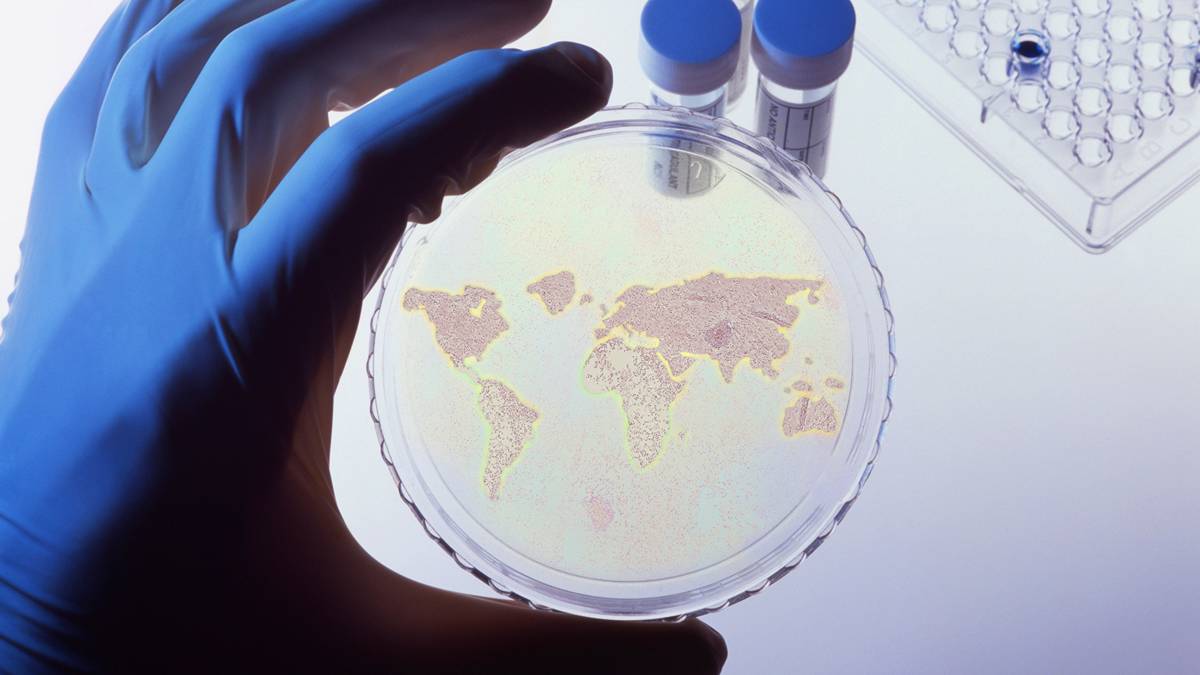From petri dishes to pharma giants, Clever Culture’s AI goes global

Global drug makers are beginning to adopt Clever Culture tech. Pic: Getty Images
- AI brings automation to pharma’s contamination control
- AstraZeneca and Pfizer standardise on Clever Culture tech
- Global drug makers adopt APAS Independence to speed sterile testing
Every vial of medicine that leaves a pharmaceutical factory has passed a long list of safety tests, and one of the most important still comes down to a simple petri dish.
Millions of these culture plates are checked by hand each year to make sure drugs are contamination-free before they reach patients.
Until recently, each plate needed a pair of human eyes, sometimes two pairs, to declare it clean.
That process is slow, prone to human error, and surprisingly manual for an industry built on precision and billion-dollar science.
One Aussie company tackling that problem is Clever Culture Systems (ASX:CC5), the developer behind APAS Independence, an AI-powered instrument now being adopted by some of the world’s largest pharmaceutical manufacturers.
From manual to machine
Clever Culture identified a surprisingly simple problem: too many plates, too little precision.
In most pharmaceutical labs, the current gold standard still involves two people manually reviewing culture plates for contamination, an inefficient process vulnerable to human error.
CC5’s technology automates that entire step.
Its APAS Independence system photographs each plate, applies an AI-trained algorithm to interpret what’s growing, and produces results that are faster, traceable, and free from fatigue or inconsistency.
It might sound like a small upgrade, but in pharmaceutical manufacturing, where cleanrooms operate 24/7 and every hour of delay can cost thousands, the payoff is huge.
Automation brings a level of consistency and compliance that’s difficult to achieve manually.
Since pivoting into the pharmaceutical manufacturing sector, Clever Culture has already attracted an A-list of global customers including AstraZeneca, Pfizer, Bristol Myers Squibb, and Novo Nordisk.
AstraZeneca alone has standardised the technology across its largest manufacturing sites, purchasing nine instruments over the past year.
And that’s just the start.
The company expects even more of the world’s biggest pharmaceutical manufacturers to adopt its platform as they move to automate what has historically been one of the most manual, error-prone steps in drug production.
Inside the machine
The APAS Independence system is built for high-throughput efficiency, capable of processing up to 240 plates at a time, while using AI to detect and classify microbial growth automatically.
It flags the rare plates that show growth, separates them for review, and uploads the rest (tens of thousands of negatives) directly into a compliant audit trail.
That workflow alone removes thousands of manual checks, and it’s what happens under the hood that has caught the attention of scientists.
The AI behind APAS was trained on years of microbiological data – images of colonies, moulds, and anomalies collected under tightly controlled conditions.
CC5’s Chief Scientific Officer Dr Steven Giglio says developing trustworthy AI for such a sensitive task took patience and rigour.
“We are a company that is dedicated exclusively to this product, and we’re proud about our history in the clinical sector, as having been the first FDA-cleared device for plate reading,” said Giglio.
“If anyone else wants to prove they can do plate reading like we do, they have to use us as their device.”
That history goes back to 2010, when Clever Culture began working with the FDA to prove AI could safely replace the human eye in microbiology.
Fifteen years later, its algorithms meet stringent US and European standards for traceability and repeatability, requirements so strict that every tweak to the code must be validated like a new medicine.
Responsible AI, the hard way
Unlike the generative models making headlines, Clever Culture’s AI doesn’t learn new tricks on its own.
“It is a static system,” Giglio explained. “It doesn’t learn by itself, doesn’t do any of those types of things that everyone’s scared about. We designed the system to do a task, and we designed it well.”
The model classifies colonies based on hundreds of thousands of annotated examples, each one checked and labelled by a team of microbiologists before ever reaching the algorithm.
That painstaking process is what gives the company confidence its readings will match, or even outperform, a trained human reviewer.
“The hardest part of AI is really what’s true,” Giglio explained.
“If I’ve got bad input, I’ll get rubbish out, it’s so true and so relevant. That’s why data cleanliness is a big deal for us.”
Every model update undergoes what he calls a “primary validation” – tens of thousands of plates and millions of colony counts run through controlled trials before deployment.
The system is deterministic: identical inputs always produce identical outputs, a key requirement for regulatory bodies like the FDA and EMA.
A new chapter in contamination control
The timing couldn’t be better.
The latest Annex 1 of the EU Good Manufacturing Practice (GMP) guidelines for sterile drug manufacturing, introduced in 2023, explicitly call for better “monitoring and control” of contamination.
The phrase appears nearly a hundred times – proof, if any were needed, that manual inspection no longer cuts it.
Clever Culture’s automation effectively bridges that regulatory gap, helping companies prove consistency and traceability while freeing scarce microbiologists to focus on more complex investigations.
Each instrument integrates directly with lab information systems, exports raw image data, and generates full audit trails under 21 CFR Part 11, the global gold standard for electronic records in pharma.
It’s an appealing solution in an industry where compliance costs can run into the billions, and where one contamination event can shut down an entire production line.
For pharma giants scaling up biologics and cell therapies, automation like this is becoming a necessity.
The bigger picture
From the outside, it might look like another AI-for-automation story. But inside the world of drug manufacturing, it’s a bit of a revolution.
What used to take teams of microbiologists days can now be done in hours, with fewer errors and richer data.
The company’s footprint is expanding fast – Europe, Asia, and North America all in play – and the validation data piling up behind its technology is creating what analysts like to call a “defensible moat.”
Once a global pharma standardises on your platform, switching costs become enormous.
It’s the kind of advantage investors notice, and scientists appreciate for its precision.
This story does not constitute financial product advice. You should consider obtaining independent advice before making any financial decision.
At Stockhead we tell it like it is. While Clever Culture Systems is a Stockhead advertiser, it did not sponsor this article.
Related Topics

UNLOCK INSIGHTS
Discover the untold stories of emerging ASX stocks.
Daily news and expert analysis, it's free to subscribe.
By proceeding, you confirm you understand that we handle personal information in accordance with our Privacy Policy.








